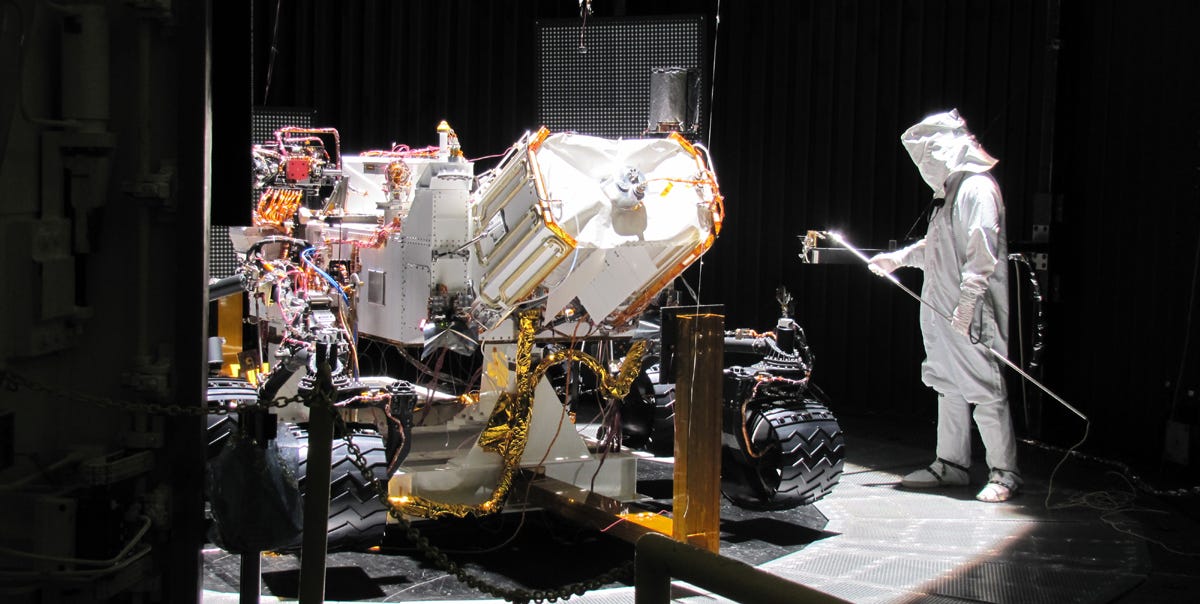All beings on Earth became what they are today under Earthly conditions. The same applies to any life forms on other planets: they will adapt to the conditions there. Therefore, the chance that bacteria, fungi, or other non-intelligent organisms from one planet will survive in the environment of another planet is slim. But not zero. So space organizations want to do their best to prevent terrestrial microorganisms from traveling into space. How do they do it?
The moon is dead
Not every rocket, lander, or orbiter orbiting a planet has to be bacteria-free. “For missions to the Moon, for example, no checks are necessary,” says Gerhard Kmink, of the European Space Agency (ESA), via email. Scientists agree that nothing lives on the Moon and nothing has ever lived there. If terrestrial microorganisms ended up there and unexpectedly survived, they wouldn't be able to do as much damage, because they wouldn't disrupt the search for life there. Kmink: “But strict procedures are needed, for example, to land on Mars or Europa (Jupiter’s moon).” Because on that planet and moon it cannot be ruled out that we may one day find life there.
Not a speck of dust in sight
Therefore, Mars vehicles and their parts are built in so-called clean rooms. There's too much pressure there. Before air enters this space, it passes through advanced filters that remove small particles of dust, bacteria and other dirt. “Before ESA employees enter the cleanroom, they put on protective gear, including gloves, goggles, and masks,” Kmink wrote. This means that no bacteria, hair or dander can get into the car. “This makes the cleanroom 10,000 to 100,000 times cleaner than a regular room.”
These measures do not kill the organisms on board the spacecraft, but they reduce their numbers to an acceptable level. If there are too few, there is little chance that a few individuals will be able to survive the harsh conditions of space travel and contaminate their destination. Kmink: “Instruments that are really looking for life, or parts of a spacecraft that come into contact with places on Mars or Europa where there might be water and therefore life, are futile.” To make something sterile, it is first cleaned with an agent that dissolves organic molecules. It is then sterilized by baking it in an oven at a temperature of 110 to 125 degrees Celsius for several days. Alternatively, it can also be treated with hydrogen peroxide gas.
The effect releases bacteria
Traveling on the outside of the spacecraft isn't the only problem researchers face. Microorganisms can also be present in the probe material and be released if it accidentally breaks somewhere. This is why a spacecraft heading to Mars or any other sensitive destination is launched in the wrong direction.
Only if the probe stays on this incorrect path will Mission Control adjust it slightly. Does the ship remain under control? Then its direction changes slightly again. In this way, the course is diverted in small, controlled steps towards the path that takes the ship to its destination. He could still crash there, but the chance of that happening is much lower.
It is also interesting: Arrived sterile on Mars? Then these survival tips will definitely come in handy for you. We all know Jupiter, Mars and Saturn. But scientists have recently discovered a few other strange celestial bodies.

“Total coffee specialist. Hardcore reader. Incurable music scholar. Web guru. Freelance troublemaker. Problem solver. Travel trailblazer.”






More Stories
“Ask at least one question in return.”
Elbendamers in the Sun: What a Wonderful Little Village
European Space Agency – Space for Kids